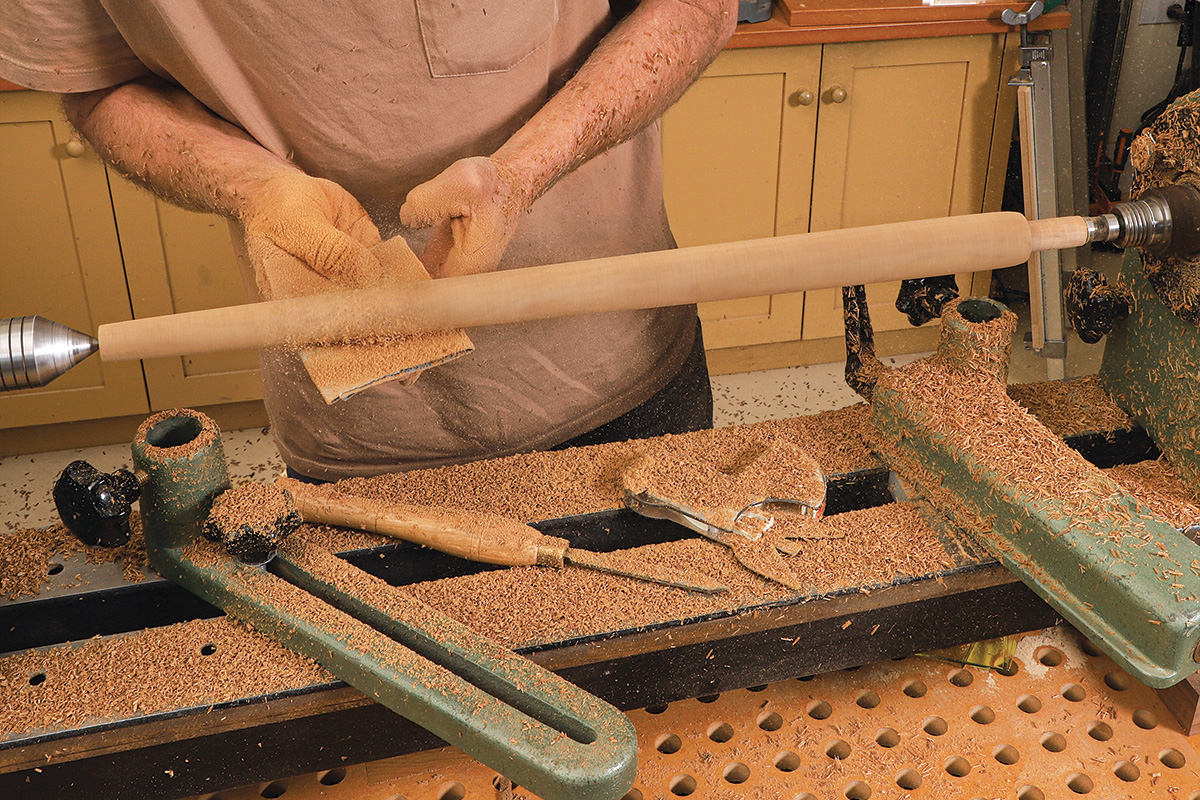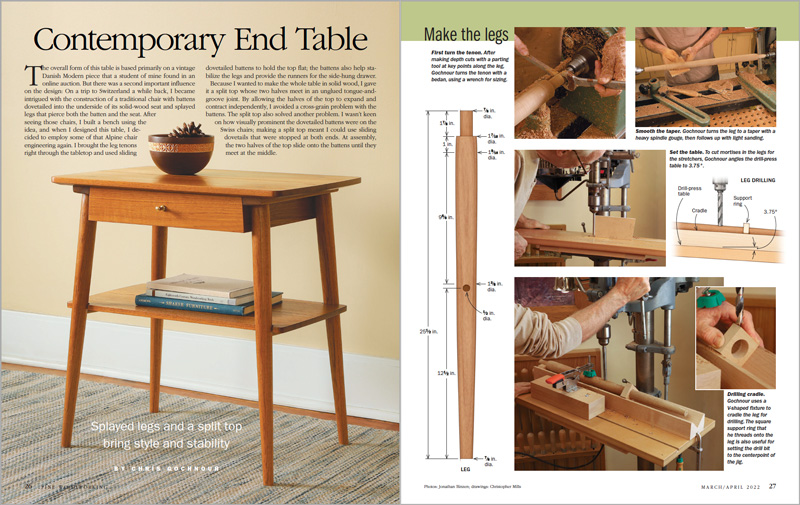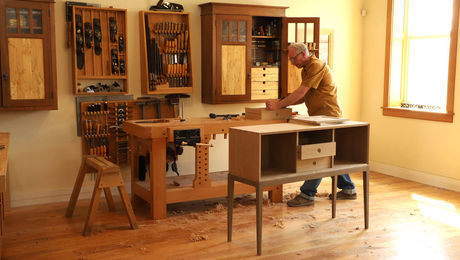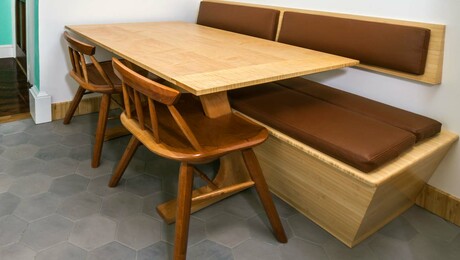Contemporary side table
Based on a vintage Danish Modern piece, Chris Gochnour's side table has legs that pierce the tabletop and battens that hold the top flat, stabilize the legs, and provide the runners for the side-hung drawer.
Synopsis: Based on a vintage Danish Modern piece with influences from an Alpine chair glimpsed on a trip to Switzerland, Chris Gochnour’s side table has legs that pierce the tabletop and battens that hold the top flat, stabilize the legs, and provide the runners for the side-hung drawer. The split top allowed Chris to use solid wood while avoiding the problems of wood movement.
The overall form of this table is based primarily on a vintage Danish Modern piece that a student of mine found in an online auction. But there was a second important influence on the design: On a trip to Switzerland a while back, I became intrigued with the construction of a traditional chair with battens dovetailed into the underside of its solid-wood seat and splayed legs that pierce both the batten and the seat. After seeing those chairs, I built a bench using the idea, and when I designed this table, I decided to employ some of that Alpine chair engineering again. I brought the leg tenons right through the tabletop and used sliding dovetailed battens to hold the top flat; the battens also help stabilize the legs and provide the runners for the side-hung drawer.

Because I wanted to make the whole table in solid wood, I gave it a split top whose two halves meet in an unglued tongue-and-groove joint. By allowing the halves of the top to expand and contract independently, I avoided a cross-grain problem with the battens. The split top also solved another problem. I wasn’t keen on how visually prominent the dovetailed battens were on the Swiss chairs; making a split top meant I could use sliding dovetails that were stopped at both ends. At assembly, the two halves of the top slide onto the battens until they meet at the middle.
It’s a simple-looking table, but with sliding dovetails joining the shelf as well as the top, a drawer with its sides angled to echo the splay of the legs, and other unusual details, it packs some entertaining challenges.
Which wood?
I’ve built this table in various woods and found that walnut suits it very well. For this one, though, I chose teak, a handsome wood that is appropriate to the Danish Modern period. I hesitated before deciding to use it, because teak can be a bit tricky. The issue is not workability. Apart from its tendency to dull tools rapidly, it’s very workable wood. The difficulty is with the color, which is beautiful… eventually. When you buy your boards, they’ll have a wonderful reddish-brown glow about them. But the minute you cut into them you get a very odd mix of colors: some oranges, some greens, some blacks. It can be disheartening when you realize that the beautiful color is just on the surface.

Rest assured that ultimately your piece in teak will have that uniformly beautiful color, but you may have to live with a little bit of patchy, irregular color for a few weeks. I’ve learned that putting the completed piece in the sun will expedite the color shift.
Legs on the lathe, then the drill press
The legs are tapered cylinders with a tenon at the top. From the tenon’s shoulder down to the shelf, the taper is very slight—just 3/16 in. or so. But below the shelf the taper is more pronounced and more visible. After cutting the tenons with a bedan, I turn the tapers with a heavy spindle gouge.

Once off the lathe, the legs are drilled to receive the stretcher tenons. The legs will have a rake of 3.75, so I set the drill-press table at that same angle. A V-jig holds the leg during the drilling. To orient the leg in the jig, I put a U-shaped collar at one end to cradle the tenon; and I made a square block with a hole in it that I slide up onto the leg. Together, they keep the leg still and centered and parallel to the table.

From Fine Woodworking #295
To view the entire article, please click the View PDF button below.
More by Chris Gochnour
 |
Build a Contemporary Sideboard |
 |
Contemporary stool with a woven Danish cord seat |
 |
7 Questions with Chris Gochnour |






















Comments
Is it possible to know what finish Chris Gochnour used for his Contemporary side table ? Unfortunately, there was no information about the finish in the article. Thanks
Log in or create an account to post a comment.
Sign up Log in